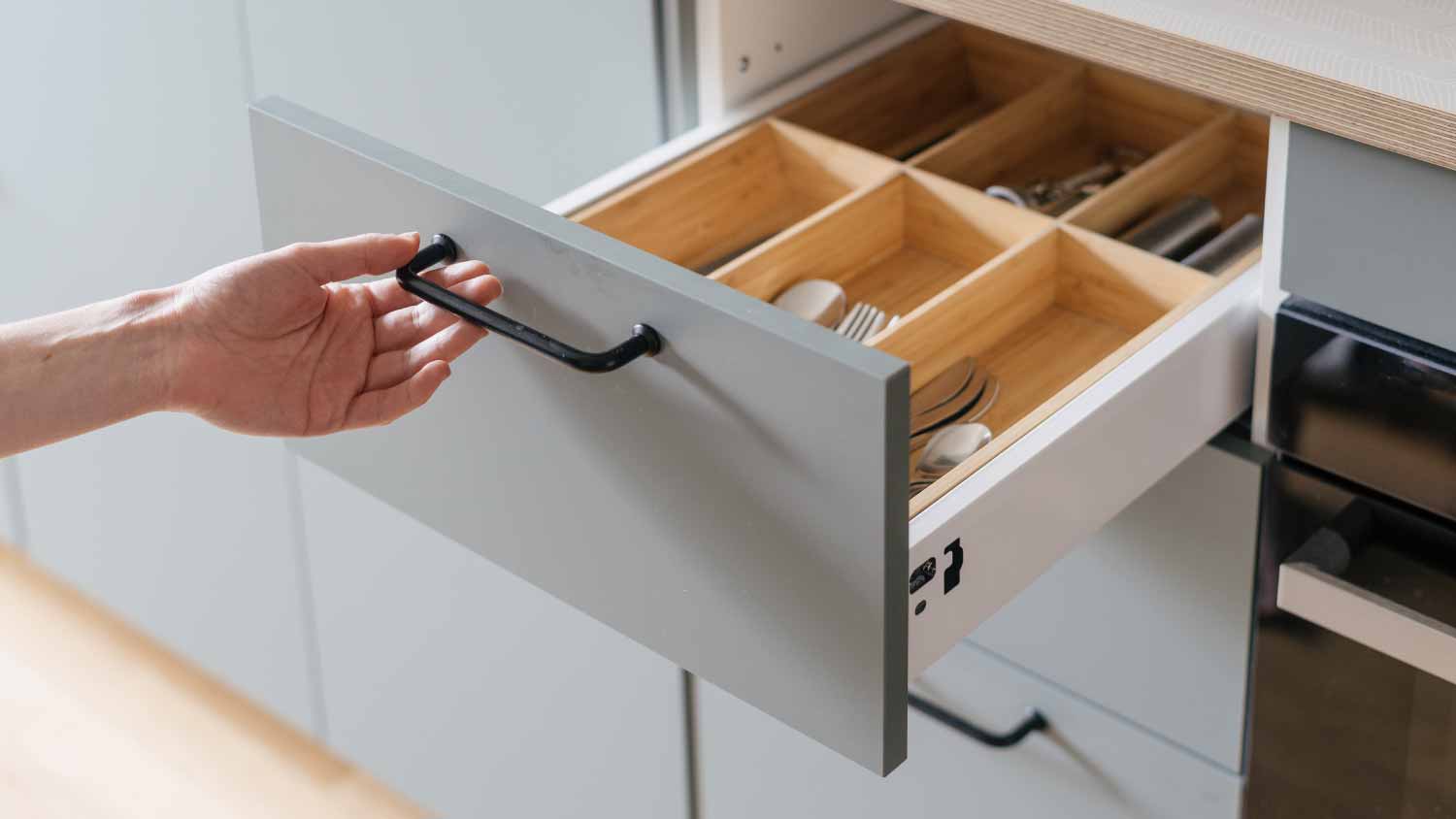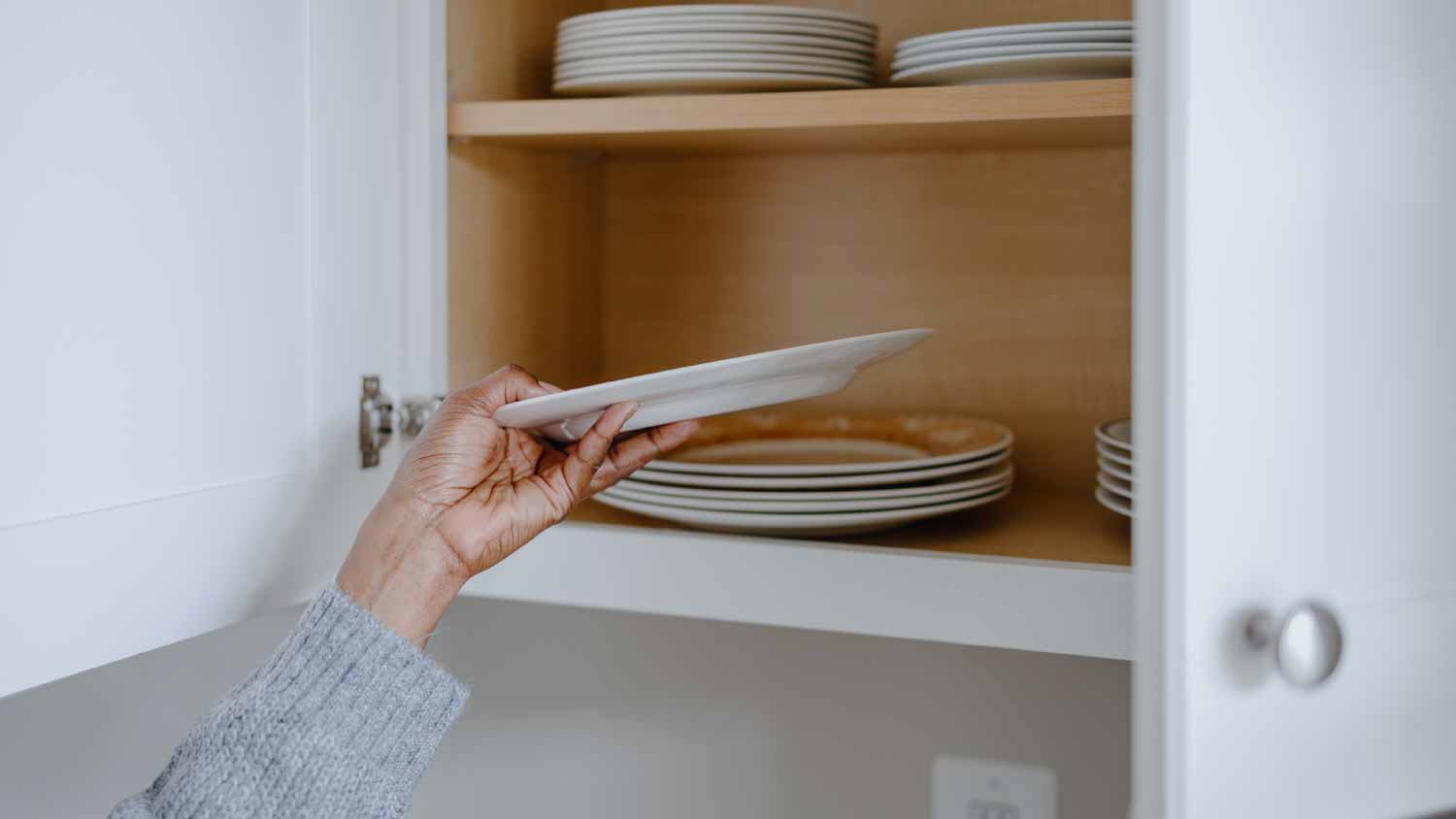What’s the Difference Between Cabinets and Cupboards?
Learn the difference between these two kitchen features


Cabinets are storage pieces that can stand alone or be built onto a wall.
Cupboards are a type of cabinet meant to store items out of sight in various rooms.
These features serve similar purposes, but we use and arrange them differently.
You might be confused about the differences between cabinets and cupboards, especially since the terms tend to be used interchangeably. Think of the two as cousins in the furniture family—they have some of the same DNA but subtle differences that set them apart. Our guide can help you understand what makes each distinct so you can decide which type of storage feature your local cabinet maker should add to your home.
What Are the Differences Between Cabinets and Cupboards?

Although they’re often confused for each other, cabinets and cupboards can be differentiated by how they’re used, how they’re made, what shape they are, and their sizes.
| Type of Difference | Cabinets | Cupboards |
|---|---|---|
| Size | Smaller when built into wall | Larger if freestanding |
| Shape | Rectangular or square | Mostly rectangular, tall or short |
| Purpose | Store everyday items | Store extra items out of sight |
| Construction | Mostly made with wood | Made with a wider range of materials |
Cabinets vs. Cupboards: Key Differences

Cabinets and cupboards are essential for keeping things organized, but they have distinct differences in size, purpose, shape, and construction.
Size
As mentioned above, cupboards are a type of cabinet, but they are usually smaller when built into a wall. They usually have shelves for storing dishes, cups, or pantry items. Think of a pantry cupboard where you keep snacks or a bedroom cupboard for storing clothes.
Purpose
Depending on the location in your home, cupboards are meant to store items in a way that keeps them hidden from view. Whether you need to store extra towels in the bathroom or spare sheets in a guest bedroom, cupboards provide extra storage for things you likely don’t need every day. On the other hand, full and overlay cabinets keep your essentials within arm’s reach so that you don’t have to dig for your spatula. They’re meant to store everything from drinking glasses in the kitchen to toothpaste and floss in the bathroom, so they usually have a door or two to conceal what’s inside.
Shape
When used in bathrooms and kitchens, cabinets are square or rectangular or can sometimes have arches to match a specific design style. Since they are featured more as freestanding pieces of furniture, cupboards are taller and more rectangular or, if used in a media room or in an entry, shorter and wider.
Construction
Cabinets typically have one or more doors, shelves, or drawers to store everyday items. They’re most commonly made of wood but can sometimes be constructed with metal or plastic. Cupboards can also have doors, shelves, and drawers and can be made from a wide variety of materials, from wood, metal, and plastic to stainless steel and melamine.
Frequently Asked Questions
The term cupboards began in the Middle Ages to describe pieces of furniture that had open shelves and were used to display cups and plates. Today, they’re used less for display and more for concealed storage of a wide variety of items, from special occasion dishware to bedding or other linens.
Cupboards can be used in pantries, but a pantry in and of itself is not a cupboard. You can have a cupboard built into your pantry for a more custom look, where it would act as a separate piece of furniture or storage element from the rest of your shelves or drawers.





- Should You Paint Your Cabinets White? Here Are the Pros and Cons.
- 10 Updates to Make Your Kitchen Cabinets Look New Again
- 5 Tips for Choosing the Best Kitchen Cabinets
- How To Build Cabinets: 9 Steps to Follow
- Melamine Cabinets vs. Wood: What’s the Difference?
- How to Clean Kitchen Cabinets With Ease
- How to DIY Home Office Built-in Cabinets and Bookshelves
- The A-to-Z Guide to Unfinished Cabinets
- What to Do When Your Painted Cabinets Feel Rough
- 25 Pantry Organization Ideas and Hacks










